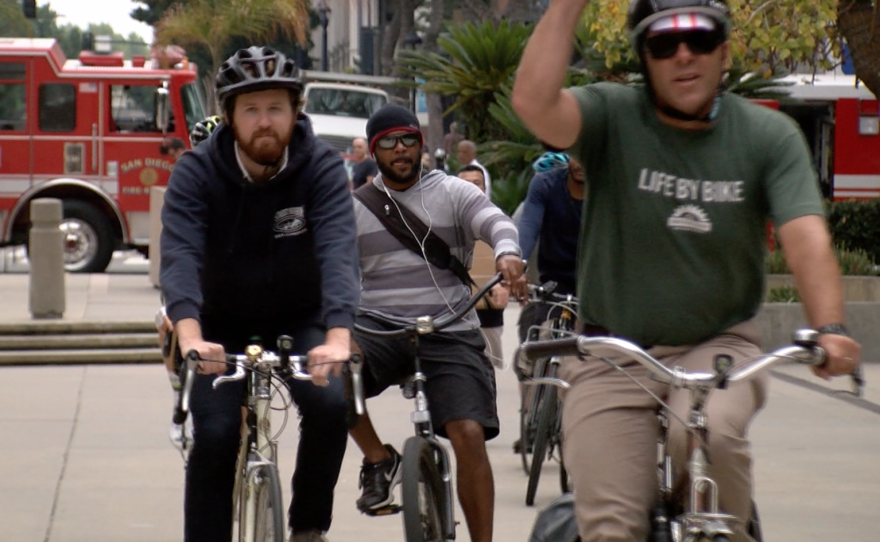San Diego's proposed pot tax
If Proposition 64 passes in November and recreational marijuana becomes legal in California, San Diego officials want to be prepared.
To City Councilman Mark Kersey, that means having the funds to deal with regulation and enforcement.
Proposition 64 would impose a 15 percent excise tax on sales of all marijuana, medical and non-medical, in addition to state and local sales taxes. It would also place a $9.25 tax on every ounce of dried marijuana flower and a $2.75 tax per ounce on dried marijuana leaves.
Some of that money would go directly to San Diego funding for drug prevention programs and grants for research and public health and safety programs.
But past experience with the way state funds are allocated has made Kersey skeptical that San Diego will receive its fair share of state money for these tasks. So he created Measure N.
Measure N imposes a local sales tax of 5 percent if Proposition 64 passes. The tax goes up to 8 percent the next year.
The city’s independent budget analyst estimates Measure N could bring in $22 million in its first year and $35 million the second, all to the general fund.
KPBS News: What Will Pot Legalization Cost San Diego?
San Diego's lofty transit goals
San Diego’s recently adopted Climate Action Plan is nothing if not ambitious.
In order to meet the plan's goals for greenhouse gas reduction, 22 percent of the commuters living in transit corridors — within a half-mile of a transit stop — are going to have to bike, walk, or take public transit to work by 2020.
By 2035, that number rises to 50 percent.
The U.S. Census Bureau says that about 8 percent of all city residents currently bike, walk or use transit. In the transit corridors, the numbers are slightly higher. The advocacy organization Circulate San Diego says about 11 percent in transit corridors get to work without cars.
These facts may be news to city officials, who have relied on data from SANDAG for their goals. SANDAG projects that by 2020, 13.1 percent of transit-area commuters will use alternative modes of transportation. But that's still not 22 percent.
Other cities have been celebrated for increasing use of mass transit, including Seattle, and even Los Angeles. But most have made gains by aggressively promoting transit over many years.
In San Diego transit use would be increased by more density around transit corridors. But most community plans don’t include increased density, and many homeowners hate the idea.
SDUT: San Diego's Unprecedented Transportation Goal

SDUSD opens preschool to all... who can afford it
The average annual cost of preschool in San Diego County in 2014 was $9,952.
This year San Diego Unified School District will open its preschool program to all, charging $5,450 or $530 a month for a half-day and $1,060 for a full day. Military families, district employees and families enrolling multiple children will get discounted rates.
The school district has had subsidized, no-cost preschool slots for the city’s poorest families (with an income of $47,000 for a family of four) for years, but 700 of those slots went unfilled last year. So the district opened preschool to all families, even those who don't live in San Diego.
Mayor Kevin Faulconer joined Superintendent Cindy Marten at the public announcement of the expanded preschool offerings, but the city is not helping fund the initiative.
KPBS News: San Diego Unified Opens Pre-K Program To All, Regardless Of Income








